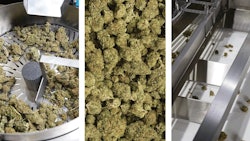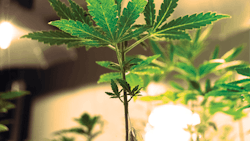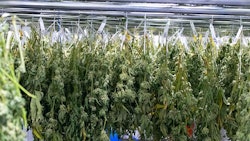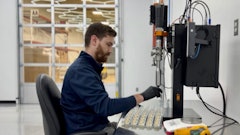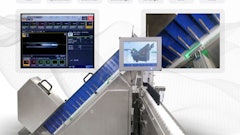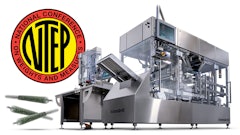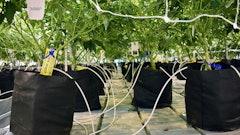
It seems that I hear some mention of artificial intelligence (AI) every day now. Just like GameStop or cryptocurrency in 2021, AI has become the latest buzzword to enter the zeitgeist.
And just like with the financial craze of 2021, opinions on the matter generally are strong, with some taking the position that it will be the greatest contribution to life since the invention of the computer and the internet, while others say there is evidence it could be responsible for the downfall of modern civilization.
Multiple companies are currently vying for supremacy in the AI space: OpenAI took the world by storm with its ChatGPT platform, forcing companies like Microsoft and Alphabet (Google’s parent company) to play catch-up. Many countries also are looking to develop AI-friendly environments: The U.S. is currently the largest AI economy globally, and China is a close second.
Recently, I’ve read or seen many stories exploring the multiple uses of AI, ranging from using large-language-model chatbots like ChatGPT to analyze data and streamline tasks, to developing algorithms that interact with different parts of grow facilities to develop automated solutions for crop cultivation. These can include determining when to water based on previous water and nutrient applications, evaporation rates and substrate moisture level. AI can also be applied in cultivation areas to better control the environmental conditions, improving overall crop health and productivity. Some cultivators are using AI-powered spectral imaging to measure potency and check for diseases like Hop Latent Viroid (HpLVd).
The Growing Application of AI in Cannabis Production
Many associate AI with robotics, such as the AI-controlled robotic arms that are utilized in automobile manufacturing.
It is these functional applications that show promises in efficiency that make me eager to watch the development of AI technology and its applications in plant-touching environments. Granted, it is impossible to know all that is being developed, but there are definitely companies utilizing automation with the intent to incorporate and utilize AI with their current technology, or that are developing new proprietary methodologies for various cannabis production steps.
For example, multiple extraction equipment manufacturers have developed automated procedures that allow extraction cycles to be completed with minimal human input, where, after workers put biomass in and take out extracted waste, the extraction process is essentially executed with a push of a button or two. Others still are experimenting with AI to analyze all related extraction parameters (biomass weight and quality, vessel pressure and temperature, volume of solvent used, etc.) to enable the production of a superior extract created more efficiently and safely at a large scale.
Some companies are looking to leverage AI to help growers grade their cannabis flower, helping them sift through a massive number of buds with greater accuracy than humans can. These systems utilize a series of AI-powered cameras to detect the visible presence of mold or mildew, as well as evaluate and sort buds based on a variety of quality factors, including size, shape, trichome head density and more.
Other companies are looking to bring automation to a part of cannabis production that has long been viewed as more art than science: curing. Using devices capable of monitoring container conditions and automatically “burping” these containers when the conditions reach certain grower-determined set points such as temperature and humidity, these systems are being designed to allow for easier process replication.
Some manufacturers are looking to improve automated trimming systems by adding AI features. One company I recently spoke with showed me an automated trimming system. After an employee places an individual flower on a holder, it traverses an assembly line. The untrimmed flower travels down the track to the trim station, where multiple, camera-guided rotating blades rapidly trim off unwanted plant material. The manufacturer states the machine is currently capable of trimming the same amount as a human can in a given amount of time. This may not sound revolutionary now, but like anything else, I suspect the technology will improve.
The Future of AI and Robotics in Cannabis
I consider these utilizations of AI to be in their infancy. I suspect some applications will be perfected and used in the future of large-scale cannabis production. Could a machine harvest a plant and cut the branches off the main stock of a plant? I suspect “yes.”
If a machine is capable of placing a cut stem with flowers on it into an automated bucking machine, then could the buds travel to an AI-powered trimming machine, then to an automated grading and sorting machine, and finally to an AI-monitored curing environment, only to finally be packaged, or sent for extraction? Again, I suspect “yes” to all of it.
But is it likely to become a reality? When cannabis is federally legal, big corporations most likely will want mass quantities of active ingredients, be they cannabinoids or terpenes, for the lowest possible cost of production without compromising quality. Utilizing robotics for all possible tasks and procedures will help achieve that lowest possible production cost. These active ingredients could end up in wellness and medicinal products, not in a jar to be sold as flower.
I also suspect some of those AI and robotics technologies will ultimately be utilized for the craft flower industry, especially bud grading tools. I can’t see any reason a commercial craft farmer would reject such equipment. Yet, I do believe many smaller producers will prefer a more hands-on approach, meaning they will prefer less automation and more human input. But with today’s rock bottom prices for cannabis (some large-scale growers are claiming prices as low as $172 per pound), it will be hard to compete with automation and AI that lowers production costs and potentially prices even further.
Many aspects of craft cannabis production could be automated and mechanized without compromising quality or the inputs that make it a craft product. For instance, a machine that is capable of potting thousands of plants in a short amount of time does not influence the final qualities of the plant. I understand some flower consumers prefer a hand-trimmed bud over a machine-trimmed bud, but it is unrealistic to hand-trim commercial amounts of cannabis destined for extraction. Perhaps the AI trimmer of tomorrow will perfectly trim a bud even better than a human.
Some companies are already developing AI-powered environmental controllers that will learn the specific growth parameters of different genetics, allowing them to automatically adjust environmental parameters like nutrient and water delivery, room temperature and humidity, and light intensity and spectrum, based on prior crop data.
Do I foresee a day soon when commercial cannabis is entirely cultivated and harvested, packaged for sale by machines or robots having artificial intelligence incorporated? No, at least, not for now.
The main roadblock to this scenario becoming reality is the same one that sinks many other great endeavors: financial cost. A completely automated production facility would likely be cost-prohibitive at this juncture. It would be difficult to repay an investor such amounts when the price per pound on a large scale is rapidly falling in flooded markets.
But if cannabis were federally legalized and Big Pharma entered the cannabis cultivation and extraction industry to self produce, I suspect they would seek stringent, GMP-certified production methods that are replicable and repeatable, so they will certainly incorporate both AI and robotics wherever possible.
As we’ve seen with the continuing evolution of computers, it will eventually be inevitable that some future technology will be superior to human-plant interaction, making the return on investment immediately obvious to large-scale operations.
As large corporate producers spend billions to assist in the development of these technologies, the trickle-down effect will benefit both medium- and small-scale production facilities, allowing them to cherry-pick which production tasks to automate based on their needs and preferred production methods. This could help them produce a superior product for a lower price, in turn allowing them to remain competitive in the AI-filled future.







